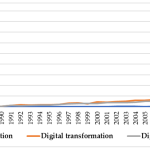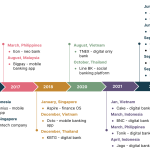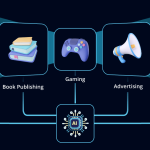As the world becomes increasingly digital, cybersecurity has evolved from a technical issue into a central pillar of economic stability. In 2025, businesses, governments, and individuals are facing an unprecedented rise in cyber threats, forcing organizations to rethink how they protect sensitive information and national infrastructure.
The surge in cloud adoption, remote work, and artificial intelligence integration has opened both opportunities and vulnerabilities, making cybersecurity one of the fastest-growing sectors in technology. Global investment in cybersecurity is projected to surpass $300 billion by 2026, as the cost of cybercrime continues to escalate across industries.
Rising Cyber Threats in 2025
Cybercriminals are becoming more sophisticated, leveraging automation and AI to launch large-scale attacks with precision and speed. From ransomware targeting hospitals and universities to phishing schemes exploiting financial institutions, the digital landscape is more perilous than ever.
Recent reports reveal that small and medium-sized businesses are increasingly vulnerable, as many lack the resources to implement robust defense systems. These companies often serve as entry points into larger corporate networks, making them high-value targets for attackers.
Government and Corporate Response
Governments worldwide are intensifying efforts to establish stronger cybersecurity frameworks. The European Union’s Digital Resilience Act, the United States’ National Cybersecurity Strategy, and similar measures across Asia aim to enforce stricter data protection standards.
Corporations are also responding with heightened vigilance. Many are investing in zero-trust architectures—security systems that require continuous verification of every user and device. This proactive approach ensures that even internal systems remain under constant protection.
Artificial Intelligence in Cyber Defense
AI has emerged as a double-edged sword in the cybersecurity arena. On one hand, it enables rapid detection of anomalies, predictive threat modeling, and automated responses that reduce human error. On the other, cybercriminals are using AI to generate more deceptive attacks, such as deepfake scams and AI-driven phishing emails.
Companies like IBM, Google, and Microsoft are pioneering AI-powered security tools that learn from attack patterns to strengthen defenses. Machine learning algorithms can now analyze millions of data points in real time, identifying potential breaches before they cause damage.
The Rise of Cybersecurity Talent and Skills Gap
The demand for cybersecurity professionals has skyrocketed. According to the (ISC)² Cybersecurity Workforce Study, the global shortage of qualified professionals exceeds 3 million. Organizations are scrambling to attract and train talent capable of managing complex systems and responding to advanced threats.
To address this, educational institutions and private firms are launching certification programs, cyber academies, and AI-driven training simulations. These initiatives aim to bridge the skills gap while encouraging more diversity and inclusion in the cybersecurity workforce.
Financial and Economic Impacts
Cybercrime costs are expected to reach $10.5 trillion annually by 2025, making it one of the most profitable illegal industries globally. Beyond direct financial loss, breaches can erode consumer trust, disrupt supply chains, and damage brand reputations.
Banks, insurance firms, and government agencies are therefore integrating cybersecurity into their core risk management strategies. In many industries, cybersecurity is no longer seen as a cost center—it’s now a fundamental business enabler and a key competitive advantage.
International Cooperation and Digital Diplomacy
Cyber threats don’t respect borders, prompting international organizations to foster cooperation among nations. The United Nations, NATO, and Interpol are actively working on frameworks for cross-border cybercrime investigations and data-sharing protocols.
This shift toward digital diplomacy represents a growing recognition that cybersecurity is not just a technical challenge—it’s a geopolitical and economic priority. Countries are now investing in cyber defense as part of their national security and economic policy agendas.
Future Outlook: Quantum Security and Beyond
The next frontier in cybersecurity lies in quantum computing. While quantum technology promises immense computational power, it also poses a threat to traditional encryption methods. Experts are now developing “quantum-safe” algorithms that can withstand attacks from next-generation processors.
Additionally, blockchain-based security solutions are gaining traction for data integrity and identity verification. The fusion of blockchain, AI, and quantum technologies may redefine cybersecurity architecture in the coming decade.
FAQs
What are the biggest cybersecurity threats today?
Ransomware, phishing, and AI-generated deepfake attacks top the list of current threats affecting both individuals and organizations worldwide.
How are governments responding to cyber threats?
Governments are implementing stronger data protection laws, national cybersecurity frameworks, and public-private partnerships to enhance digital resilience.
Why is there a shortage of cybersecurity professionals?
The rapid digital transformation across industries has outpaced the number of trained experts, leading to a global talent gap in cybersecurity roles.
Can AI fully protect against cyberattacks?
AI can detect and respond to threats faster than humans, but it cannot replace human oversight entirely. A hybrid approach combining AI and human expertise is most effective.
What’s the future of cybersecurity?
Quantum computing and blockchain will reshape the cybersecurity landscape, requiring new encryption standards and global collaboration to maintain data integrity.
Conclusion
Cybersecurity has become the foundation of digital trust in the modern economy. As industries rely more on data-driven systems, protecting digital infrastructure is no longer optional—it’s essential for economic survival and growth.
By investing in advanced technologies, nurturing skilled professionals, and fostering international collaboration, nations and businesses can build a secure digital future. The path forward depends not only on innovation but also on global cooperation, ensuring that progress in the digital age remains safe, sustainable, and inclusive.











